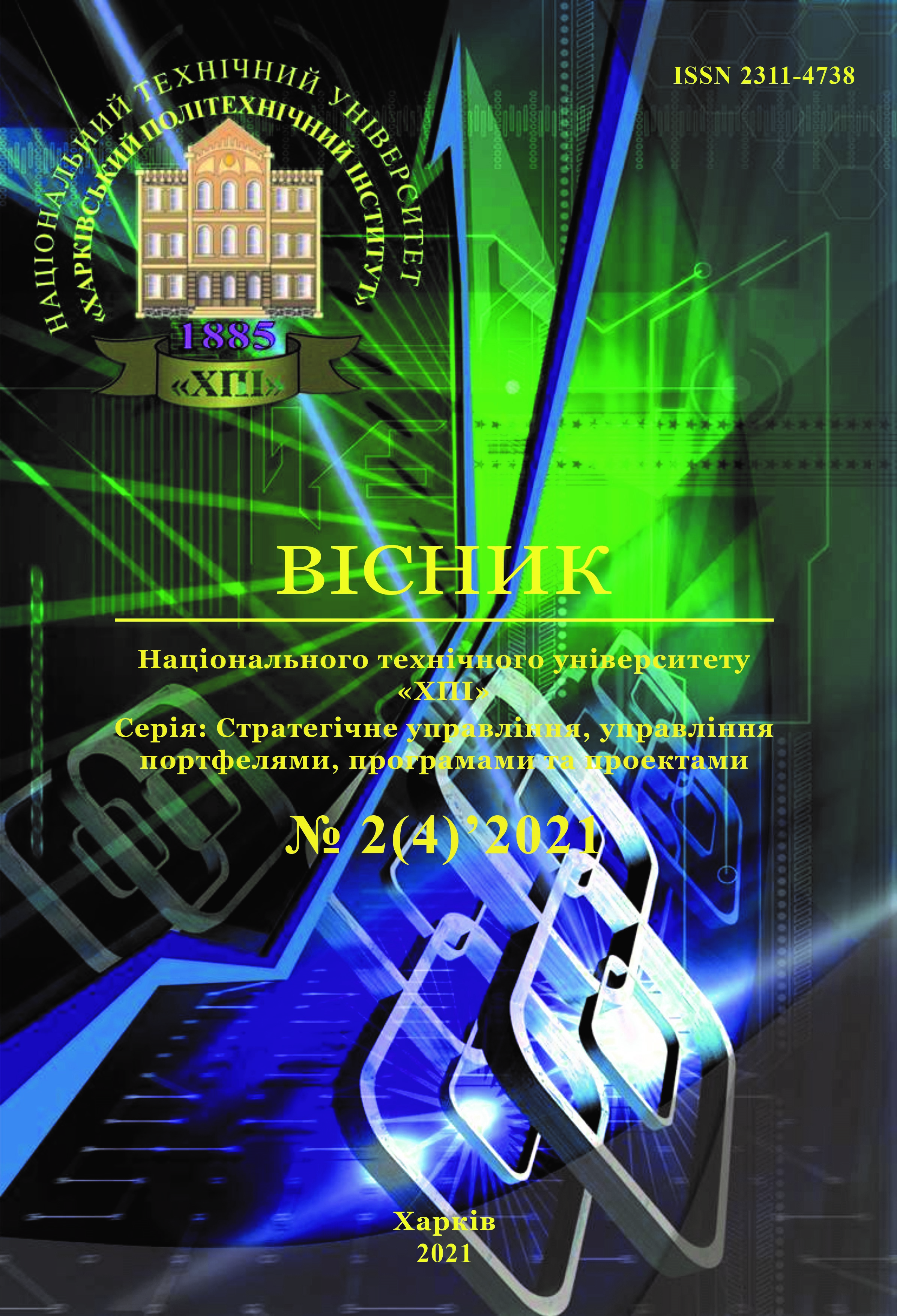MODERN RISKS OF EDUCATIONAL PROJECTS AND DEVELOPMENT OF MANAGEMENT OF HIGHER EDUCATION INSTITUTIONS ON THE BASIS OF THE BALANCE MODEL OF MANAGEMENT FUNCTIONS
DOI:
https://doi.org/10.20998/2413-3000.2021.4.3Keywords:
main stakeholder, pandemic, education reform strategy, risks, project management, innovative technologies, balance of management functions modelAbstract
The work is devoted to the study of changes in modern challenges and threats to the development of higher education in Ukraine and the construction of a model of balance of managerial functions based on the use of the methodology of I. Adizes. The current conditions of the pandemic and its impact on reforming approaches to the transformation of higher education management are analyzed from the standpoint of the project approach. It is established that the current state of work in the education system is accompanied by insufficient readiness of teachers, difficulties in technical equipment, low efficiency of production and training practices, increased individual work of teachers with students and low culture of distance learning. It is noted that the higher education system and some universities responded as quickly as possible to the force majeure situation and changed working conditions, introduced measures and practices aimed at reducing the spread of coronavirus infection and maintaining the quality of staff and student education. Areas for protection against the existing threat of a pandemic and further development of the higher education system are singled out, namely: measures of international cooperation, measures by the state and measures taken within the institutions of higher education themselves. The use of the Adizes code to build a balanced and effective management of a higher education institution that will help the organization to function effectively now and in the long run is considered. Managers must be proactive to be effective. Only integrated organic systems can be truly effective, in which there is interchangeability of the components of the overall structure, and the internal interdependence between them is carried out at the physical level.
References
Ігуменцева Н. В. и др. «On-line support» system as a component of strategy of reformation of higher education. Bulletin of NTU" KhPI". Series: Strategic Management, Portfolio, Program and Project Management. – 2019. – №. 1 (1326). – С. 71-77.
Стратегії реформування вищої освіти в Україні до 2020 року» (Проект). URL: http://osvita.ua/doc/files/news/438/43883/HE_Reforms_Strategy_11_11_2014.pdf
COVID-19 и Высшее образование: Oтучиться от прежних навыков ради создания системы образования на будущее. URL: http://https://www.un.org/ru/85374
Каленюк И. С. и др. Современные риски развития высшего образования в Украине. Экономика Украины. 2015. №2 (631). C. 70–83.
Друкер П.Ф. Классические работы по менеджменту / ред. Р. Пискотина; пер. И. Григорян, О. Медведь, С. Писарева. - 2-е изд. М.: Альпина Бизнес Букс, 2016. 218 с. http://biblioclub.ru
Рубин Ю.Б. Управление собственным бизнесом: учебник. М.: Университет «Синергия», 2016. 977 с.: ил., табл. (Университетская серия). http://biblioclub.ru
Адизес И.К. Стили менеджмента – эффективные и неэффективные / пер. с англ. 5-е изд. М.: Альпина Паблишер, 2016. 198 с. http://biblioclub.ru
Акулов А.О. Парадигмы и методы современного менеджмента: учебное пособие. Кемерово: Кемеровский государственный университет, 2014. 94 с.http://biblioclub.ru
Бобин М.С. Современные тенденции менеджмента: теория систем; концепция сопряженных обстоятельств. М.: Лаборатория книги, 2012. 104 с.http://biblioclub.ru
Нейман Дж., Моргенштерн О. Теория игр и экономическое поведение ; [пер.с англ. под ред. и с доб. Н.Н. Воробьева]. М. : Наука, 1970. 703 с.
Downloads
Published
Issue
Section
License

This work is licensed under a Creative Commons Attribution-NonCommercial-ShareAlike 4.0 International License.
Our journal abides by the Creative Commons copyright rights and permissions for open access journals.
Authors who publish with this journal agree to the following terms:
Authors hold the copyright without restrictions and grant the journal right of first publication with the work simultaneously licensed under a Creative Commons Attribution-NonCommercial-ShareAlike 4.0 International License (CC BY-NC-SA 4.0) that allows others to share the work with an acknowledgement of the work's authorship and initial publication in this journal.
Authors are able to enter into separate, additional contractual arrangements for the non-commercial and non-exclusive distribution of the journal's published version of the work (e.g., post it to an institutional repository or publish it in a book), with an acknowledgement of its initial publication in this journal.
Authors are permitted and encouraged to post their published work online (e.g., in institutional repositories or on their website) as it can lead to productive exchanges, as well as earlier and greater citation of published work.

